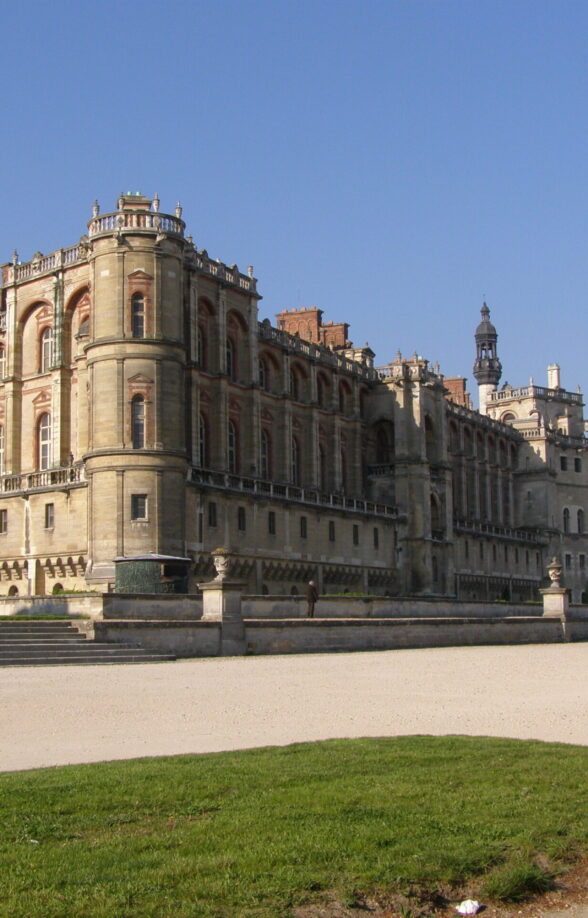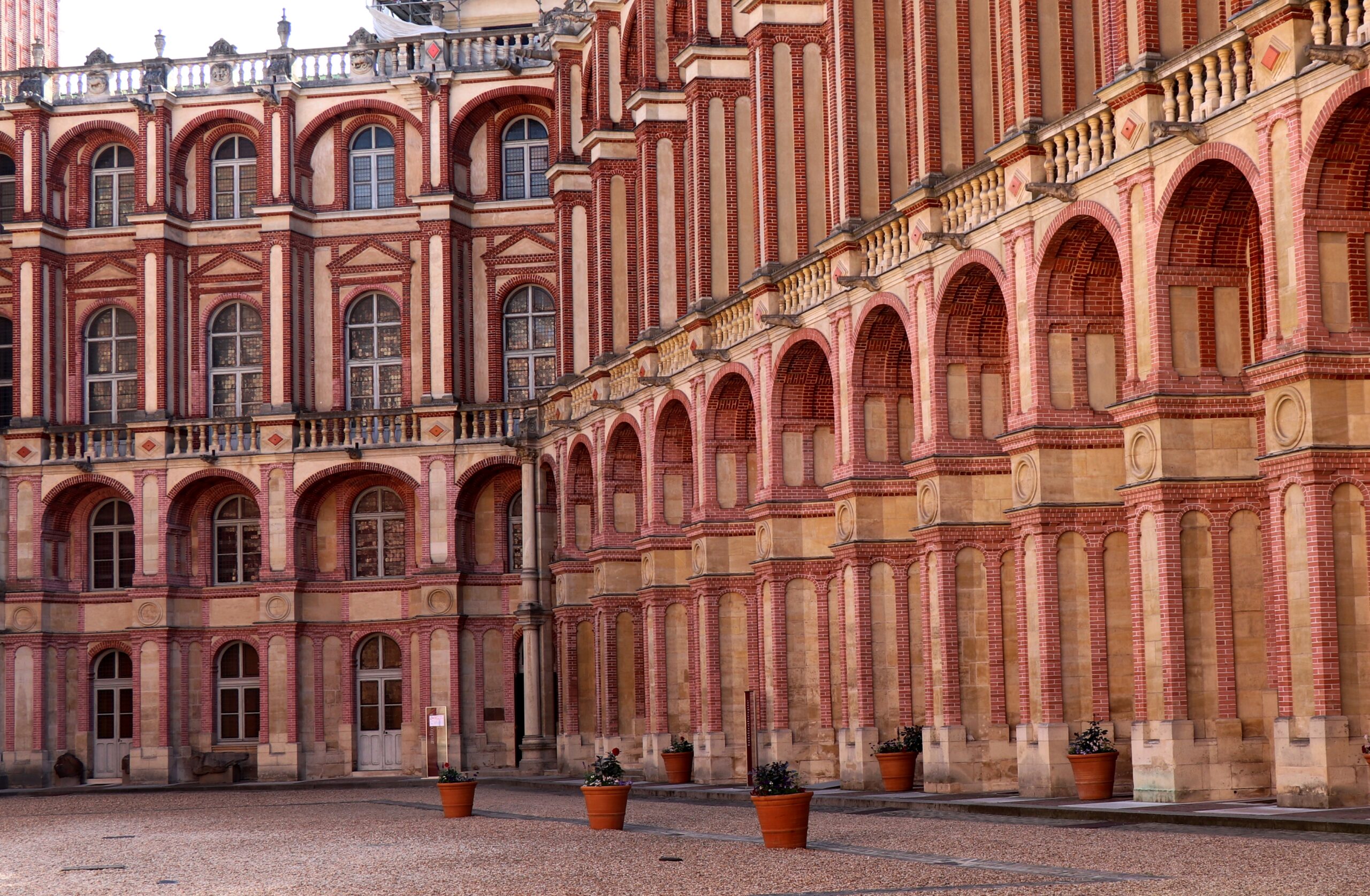The Château-Vieux de Saint-Germain has welcomed many kings over the centuries, up to the time of Napoleon III, who turned it into the Musée d'Archéologie nationale that we know today. Come and learn about its history.
/ A ROYAL RESIDENCE /
The imposing Château de Saint-Germain with its elegant Renaissance-style profile is in fact the third of a series that was begun by Louis VI in the 12th century. The first fortress, which became a ruin after the Hundred Years' War, gave way to a second building with a pentagonal shape commissioned by Charles V. It was François I who finally instigated the building of the Renaissance château, which was designed by Pierre Chambiges.
François I and the kings that succeeded him stayed here often. Henri II continued the work initiated by his father and began construction of the Château-Neuf, where Louis XIV was born on 5 September 1638. It was Henri IV who finished this building. Overlooking the Seine, it was a real pleasure palace for the king and the court. The king added terraced gardens, which stretched down to the river. The Château-Neuf de Saint-Germain was at that time one of the finest in Europe.
Under the reign of Louis XIV, Saint-Germain became the seat of the kingdom's government and the Château-Vieux was the king's main residence from 1666 to 1682, when the court left for Versailles; the layout of the city centre dates from this time. Some important events took place in the château, including the christening of Louis, Grand Dauphin, and the marriage of Mlle de Lois and the Prince de Conti; it was the scene of grand festivities, too: concerts, balls and theatrical performances. The King particularly favoured the worked of Molière and Lully.
Towards the end of the 18th century, the Château-Neuf, which was already in a state of disrepair due to a lack of maintenance, was abandoned. Today, only a few remains, including the Rampe des Grottes and the Mur des Lions, recall its former existence.
/ TODAY'S MUSÉE D'ARCHÉOLOGIE NATIONALE /
Napoleon III had the Château-Vieux restored by Eugène Millet, who notably destroyed the corner pavilions that Louis XIV had added. In 1867, the Emperor set up the 'Musée d’antiquités celtiques et gallo-romaines' here.
Today, it houses the Musée d'Archéologie nationale. The old rooms of this Renaissance building display some of the finest archeological collections in the world.
/ THE CHÂTEAU'S COURTYARD AND CHAPEL /
It was Louis IX, known as Saint Louis, who, in 1230–38, added a chapel whose style prefigured that of the Sainte-Chapelle de Paris. Many royal christenings and marriages took place here.
Later, François I, adding bricks to stone, built the Renaissance château that you can discover today. And it was in the palace chapel that he married Claude of France on 18 May 1514.
In the courtyard, a hidden trompe-l'œil presents itself to keen-eyed visitors. See if you can find it!
As you enter the Rayonnant Gothic-style chapel, the oldest of the preserved buildings, look up and admire the corners of the rib vaults and their seven ronde-bosse heads, and have some fun seeing if you can spot that of Saint Louis!
Free admission except during certain temporary exhibitions.
The imposing Château de Saint-Germain with its elegant Renaissance-style profile is in fact the third of a series that was begun by Louis VI in the 12th century. The first fortress, which became a ruin after the Hundred Years' War, gave way to a second building with a pentagonal shape commissioned by Charles V. It was François I who finally instigated the building of the Renaissance château, which was designed by Pierre Chambiges.
François I and the kings that succeeded him stayed here often. Henri II continued the work initiated by his father and began construction of the Château-Neuf, where Louis XIV was born on 5 September 1638. It was Henri IV who finished this building. Overlooking the Seine, it was a real pleasure palace for the king and the court. The king added terraced gardens, which stretched down to the river. The Château-Neuf de Saint-Germain was at that time one of the finest in Europe.
Under the reign of Louis XIV, Saint-Germain became the seat of the kingdom's government and the Château-Vieux was the king's main residence from 1666 to 1682, when the court left for Versailles; the layout of the city centre dates from this time. Some important events took place in the château, including the christening of Louis, Grand Dauphin, and the marriage of Mlle de Lois and the Prince de Conti; it was the scene of grand festivities, too: concerts, balls and theatrical performances. The King particularly favoured the worked of Molière and Lully.
Towards the end of the 18th century, the Château-Neuf, which was already in a state of disrepair due to a lack of maintenance, was abandoned. Today, only a few remains, including the Rampe des Grottes and the Mur des Lions, recall its former existence.
/ TODAY'S MUSÉE D'ARCHÉOLOGIE NATIONALE /
Napoleon III had the Château-Vieux restored by Eugène Millet, who notably destroyed the corner pavilions that Louis XIV had added. In 1867, the Emperor set up the 'Musée d’antiquités celtiques et gallo-romaines' here.
Today, it houses the Musée d'Archéologie nationale. The old rooms of this Renaissance building display some of the finest archeological collections in the world.
/ THE CHÂTEAU'S COURTYARD AND CHAPEL /
It was Louis IX, known as Saint Louis, who, in 1230–38, added a chapel whose style prefigured that of the Sainte-Chapelle de Paris. Many royal christenings and marriages took place here.
Later, François I, adding bricks to stone, built the Renaissance château that you can discover today. And it was in the palace chapel that he married Claude of France on 18 May 1514.
In the courtyard, a hidden trompe-l'œil presents itself to keen-eyed visitors. See if you can find it!
As you enter the Rayonnant Gothic-style chapel, the oldest of the preserved buildings, look up and admire the corners of the rib vaults and their seven ronde-bosse heads, and have some fun seeing if you can spot that of Saint Louis!
Free admission except during certain temporary exhibitions.

